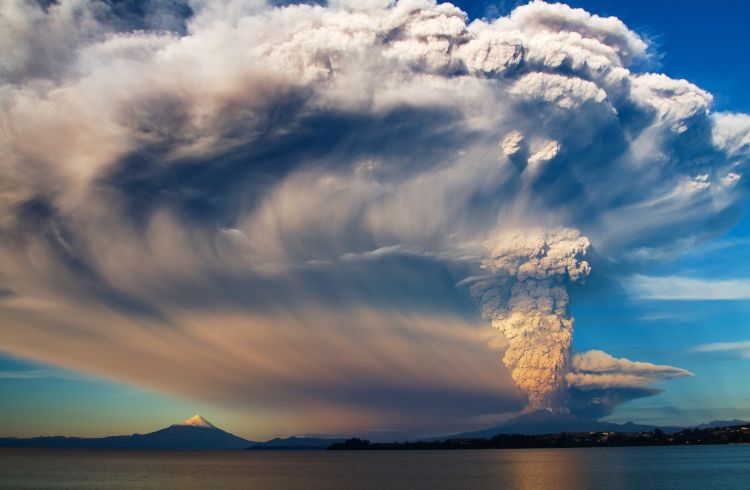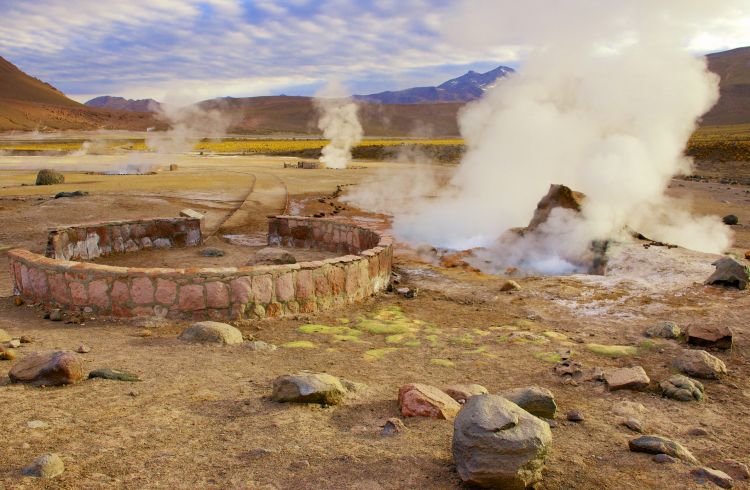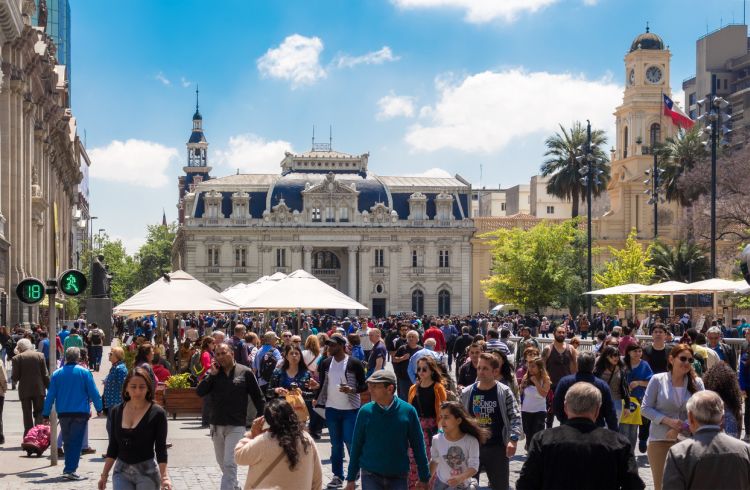Natural Disasters in Chile: Essential Tips to Stay Safe
Chile is home to many natural wonders. However, these can threaten the safety of many people. Be prepared for the geysers and ground shakes with our travel safety tips.
 Photo © Getty Images/gadaian
Photo © Getty Images/gadaian
The northern two thirds of Chile is located on The Nazca Plate, an oceanic tectonic plate that shares a subduction line with the continental South American Plate, creating a very geologically active region. From geysers and volcanoes to high mountain peaks and glaciers, Chile is a naturally diverse country to explore.
But, active volcanoes and earthquake tremors are very real risks for locals and travelers in Chile. While predicting them isn't always easy, here are a few natural disaster threats to be aware of, how to to stay safe when visiting geologically active locations.
Earthquakes
Like many countries located on the famed Pacific Ring of Fire, Chile has a long history of shake, rattle and roll. In recent years, the country has seen an increase in high magnitude quakes and the subsequent damage and destruction that inevitably follows.
In 2017, a magnitude 7.1 earthquake struck Valparaiso, causing widespread damage to buildings and roads, and triggered tsunami alerts. Fortunately, no one was killed.
Earthquakes can happen anytime and anywhere, so it's good to keep an eye on local news and government alerts before and while traveling in Chile. Check out our article on what to do should you, unfortunately, find yourself in an earthquake situation.
Volcanoes
Chile is home to several active volcanoes, some of which threaten to erupt at any time. For instance, the Chaiten volcano, located in the Los Lagos region south of Santiago, remains under close watch for the threat of volcanic activity and several areas have been restricted as a result.
That same volcano erupted in 2008 and resulted in the evacuation of Chaiten and the surrounding areas due to dangerous ash fall. Another recent flare-up involving the Llaima volcano, located in the Conguillo National Park caused the government to restrict access to the park and surrounding areas as a precaution.
Anyone traveling within an active volcano zone should exercise caution and pay close attention to current news reports and government issued warnings.
Geysers
Some of the most incredible natural wonders found in Chile are the many geysers and thermal sources that are located throughout the country. El Tatio, a major tourist attraction located in the Andes in northern Chile, is one of the most active geothermal areas in the country featuring a mix of geysers, fumeroles and other geological structures.
Under pressure, geysers erupt large amounts of hot corrosive water into the air. The effect is like taking the lid off a pressure cooker. Fumeroles, on the other hand are vents which emit steam and volcanic gases such as hydrogen sulfide (hence the rotten egg smell), carbon dioxide and hydrogen chloride.
But as fascinating as they are, these are dangerous and should be treated with caution. The ground between geysers or fumeroles can be thin and unstable which can break when stepped on.
Even worse, falling into a geyser can have devastating results. In 2015, a Belgian traveler fell into a scoldingly hot geyser in El Tatio while trying to take a photo, sustaining burns to 80% of her body. Sadly, she didn't survive the incident despite making it to hospital. Her husband also sustained burns trying to rescue her.
The steam and gases from fumaroles can cause a thick fog making it difficult to see where you are stepping. An unfortunate Spanish traveler learned this lesson the hard way when his glasses fogged up from the steam and he continued walking blindly, stepping directly into the open hole of a geyser. Sun glare is also another hazard which can make it difficult to see where you are going.
Adding to the danger of the unstable ground and hot plumes of hazardous vapor

Other Hazards in Chile
The weather in Chile can also pose a possible threat to unsuspecting and ill-prepared visitors.
The Atacama Desert is an area that can be enjoyed year-round, but visitors should be adequately prepared for the extreme temperatures that can occur there.
Days are long and brutally hot during the summer and can easily cause conditions such as heat exhaustion or sunstroke if not properly prepared for. Conversely, temperatures in the higher altitude areas can drop severely when the sun goes down.
Fall and winter are the rainy seasons in Chile and flooding
Smog can also be a problem during winter months because of the health risks associated with it. Santiago is especially susceptible to the issue, often declaring pre-emergency and emergency states when the degree of smog reaches a dangerous level. Anyone suffering from ill health, or traveling with children or the elderly should avoid visiting the city during these periods.
But these natural wonders should also inspire a certain level of respect because of the potential dangers they present. As long as you exercise caution, monitor news reports and heed government warnings while there, you should be able to experience the amazing Chilean environment safely.
Related articles
Simple and flexible travel insurance
You can buy at home or while traveling, and claim online from anywhere in the world. With 150+ adventure activities covered and 24/7 emergency assistance.
Get a quote
6 Comments
Hi there!
With respect for Phil Sylvester, I need to say if you want give advice to travelers, you must to give them a solution in this situacion (earthquake, tsunami, and so on). And chilean person is the perfect to explain this things!
Gracias! y Saludos!
At least tourists would know what to expect.
Even though we have several risks, we Chilean people are prepared to those events. As we born in this territory, we are aware (because of oral history or our own experience) of what to do when a earthquake happens, for example. Chile is a unique and incredible country because of its 'crazy geography' (there is a book called like that), so if you go there as a tourist you just have to meet Chilean local people and you ask them what is necessary to be safe at any case (safety areas in a building, evacuations roads and safety zones).
how safe is Chile from disasters then costa Rica, brazil, Uragay, Argentina, Ecuador etc.
I went to Chile and I never experienced any of these problems
Agree - not sure what the point of this post is if it doesn't provide advice.